Xem TIN TỨC
New Projects in Guatemala, Australia Sweetening Sugar Industry Sustainability Practices
Tuesday - 17-07-2018 | 08:56:39 AM
Tuesday - 17-07-2018 | 08:56:39 AM
TIN MỚI NHẤT
bình luận mới
Đoàn Quang Phong
Gửi TS Đỗ Ngọc Diệp Đọc bài viết của TS tôi rất tâm dắc.Vấn đề cơ gới hoá thu hoạch là khâu cấp thiết giá thành thu hoạch cụ thể giảm chi phí 70000/tấn, tận thu hầu hết nguyên liệu gốc, phần loại bỏ được trả lại cho đất. nói chung máy thu hoạch phải đạt những tính năng như TS đã nêu.Tôi xin giới thiệu với ông mô hình tôi đã mày mò(www.youtube.com/watch?v=N_YppX5wEq4),cần sự cộng tác để hoàn thành. Những bất cập trên mô hình chẳng qua chỉ thiếu vốn đầu tư mà thôi. Tôi mong rằng Viện nghiên cứu qua ông quan tâm. Tôi chỉ là nông dân trồng mía rất nhọc nhằn trong khâu thu hoạch nên quyết tâm suy nghĩ thế thôi. Rất mong được cơ quan, cá nhân có tâm huyết và khả năng tiếp nhân để sản xuất máy công cụ này. Rất mong được trao đổi
Nguyễn Thế Hữu
Chân thành cảm ơn Chú Diệp! Bài viết của Chú rất hữu ích và mang nhiều ý nghĩa thực tế trong ngành trồng mía hiện nay. Chúng cháu kính chúc Chú luôn dồi dào sức khỏe để còn dẫn lối nhiều hơn nữa cho ngành mía đường Việt Nam.
Nguyễn Thế Hữu
Dear quý Anh/Chị đồng nghiệp!
Hiện nay tôi đã được 1 người thân giúp đỡ và lấy được những tài liệu dạng fulltext từ tạp chí chuyên xuất bản những nghiên cứu về cây mía "Sugar Tech",
Anh/Chị nào cần file fulltext để tham khảo thêm thì liên hệ với tôi qua email: nthuu@hotmail.com hoặc số phone: 0983.832.776
Lưu ý: Anh/chị chỉ cần gửi tên đầy đủ của nghiên cứu qua email.
Trân trọng!
Bùi Anh Văn
Gửi anh Đông anh có thể tải về và tham khảo tại đây:
http://www.mediafire.com/?b9jl3g7272zh17e
http://www.mediafire.com/view/?fr8e2frdhj60l2f
Phan Văn Toàn
Kính gửi Quý Viện
Để muốn có các tài liệu nghiên cứu trên phải mua trên mạng với giá 20 - 40 USD, vì vậy Quý Viện có quỹ nào để mua và cung cấp cho đọc giả tham khảo kịp thời các tiến bộ kỹ thuật.
Trân trọng cảm ơn!
Sugar Tech
June 2012 , Volume 14 , Issue 2 , pp 126-133
Wider Row Spacing in Sugarcane: A Socio-economic Performance Analysis
T. Rajula Shanthy , GR Muthusamy
Purchase on Springer.com
$39.95 / €34.95 / £29.95 *
* Final gross prices may vary according to local VAT.
lịch việt
Liên kết website
Thống kê
21780
Tổng số khách đã viếng thăm

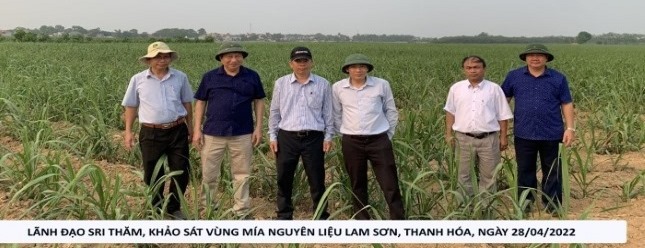
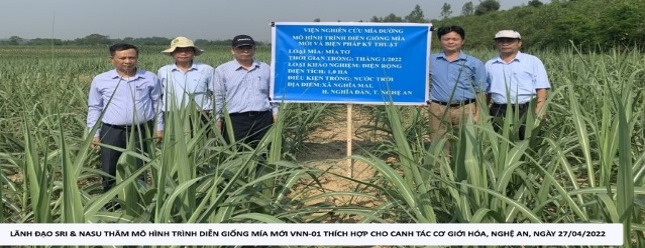
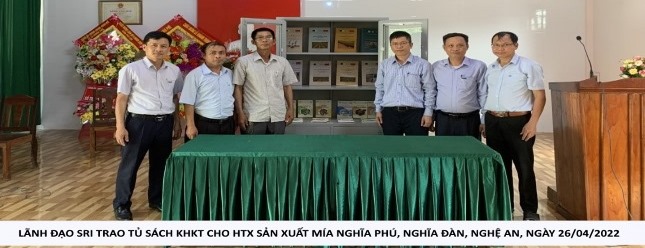
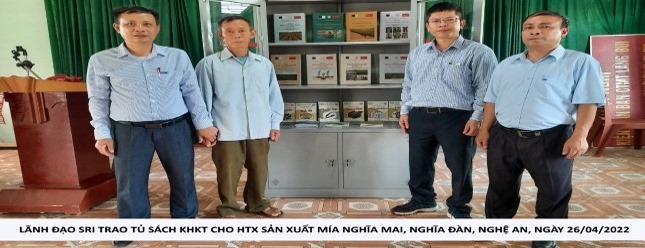
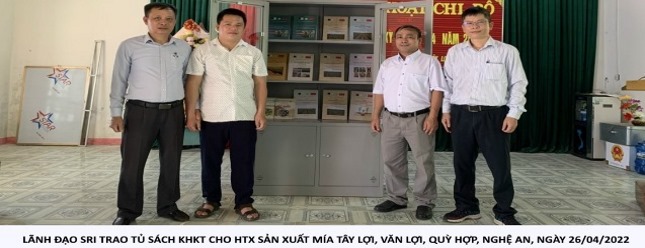

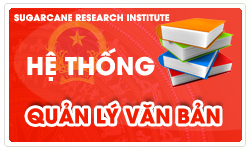



Sugar has been a hot topic the past few years due to artificial and natural sweeteners entering the market and growing concerns about obesity and children’s health. The U.S. is the top consumer of sugar, and while it is among the top ten producers of sugarcane, the country is still among the top five importers due to its high population and consumption rates. Australia and Guatemala are among the top five exporters. While Australia primarily exports to Asian countries, the U.S. is Guatemala’s main export market. As such, changes to production practices in Australia and Guatemala could have significant implications on the sustainability of sugar across the globe – and that’s precisely what two new projects are striving for.
The Sustainable Sugar Project, funded by Australia’s Coalition Government, aims to use blockchain encryption to improve supply chain transparency. Beginning with sugarcane growers in Queensland, the project aims to show sugar buyers where the sugarcane came from and the sustainability of that farm. The government expects this full traceability and more visibility for sustainably grown product to help unlock higher farm gate prices, increase exports and better access to markets in the future.
“Canegrowers across central Queensland are getting on board with the Smartcane Best Management Practice approach to soil health, vegetation, and biodiversity,” said Michelle Landry, Member of Parliament for Capricornia. “They deserve to be recognized and rewarded for it.
“The $2.25 million Smart Farm grant was delivered to Queensland Cane Growers, who will partner with Queensland Sugar Ltd on this four-year project.”
Minister for Agriculture and Water Resources David Littleproud added that consumers and food manufacturers want sustainably sourced food and fiber, including sugar, and they want to know where it comes from. Customers are asking big sugar buyers for the information, and blockchain can provide this information without the risk of it being tampered with. Coca-Cola, for example, has a plan to source 100 percent of its sugar from sustainable sources by 2020. Blockchain technology would help Coca-Cola not only identify sustainably grown sugar in their supply chain, but also where it came from and who grew it.
Meanwhile, the Guatemala sugar industry launched Sugar for Good, a campaign and pledge to meet nine sustainability commitments tied to the Sustainable Development Goals (SDGs) by 2025.
An initiative of the 11 sugar mills that comprise the Guatemalan sugar association, ASAZGUA, and its partner organizations – Fundazucar, a foundation funded by a collection of sugar producers to run and promote community programs; sugarcane research organization Cengicaña; and Expogranel, a sugar export terminal – the campaign aims to connect the operational benefits of sugar production with economic, environmental and social development in the country. Sugar is Guatemala’s main agricultural export, with production of over 2.8 million tons of sugar per year, making it a strong source of economic prosperity for those in the industry. The agriculture sector accounts for nearly 30 percent of the country’s employment, and sugar is tied to roughly 80,000 direct and 400,000 indirect jobs.
“The progress the industry has made since its inception has transformed the Guatemala sugar industry into an economic driver, a catalyst for sustainable cultivation and processing practices, as well as a strong advocate for social development,” said Luis Miguel Paiz, General Manager at ASAZGUA. “Our agenda for 2025 includes ambitious goals to help ensure economic, social and technological progress occurs in harmony with nature, and continue providing productive employment at every stage of the sugar development process, thus promoting inclusive and sustainable economic growth.”
The organizations say the new commitments will increase productivity and innovation, create 2,000 jobs through technical training of cane-cutting personnel to help end poverty, and improve environmental management by reusing 100 percent of wastewater and reducing sugarcane burning by 50 percent. ASAZGUA further pledged to contribute to the overall improvement of public health and training one million women in food security and preventive health, among other areas.
“The commitments the Guatemala sugar industry has pledged portray its continued dedication in being a global leader,” said José Orive, Executive Director at the International Sugar Organization (ISO). “The industry has shown best practices by using sugarcane bagasse, a waste of sugar production, as a source of renewable energy in Guatemala, accounting for up to 32 percent of the country’s electricity supply. As the pioneer of the fortification of sugar with Vitamin A, the most successful micronutrient program in the history of mankind, Guatemala has become a role model in addressing nutritional needs of developing communities for more than 30 years, eradicating infant blindness and improving the health of lactating mothers.”
The new goals for 2025 build on these successes, such as by striving to fortify 100 percent of the sugar for national consumption with vitamin A to continue helping end child blindness and 30 percent of the country’s sugar for national consumption with iron to help decrease anemia. On the environmental side, they further aim to achieve zero net losses of forest in sugar cane plantations, plant 6 million trees, take action to safeguard forests and water in 100 percent of the basins where their mills operate, and continue using 100 percent of oxo-biodegradable packages for local markets. They are also looking forward in terms of crop resilience and being adaptable in the face of climate change, with a goal to develop ten new Guatemalan sugarcane varieties for more productive yields, disease resistance, and to withstand climatic changes.
by Hannah Furlong